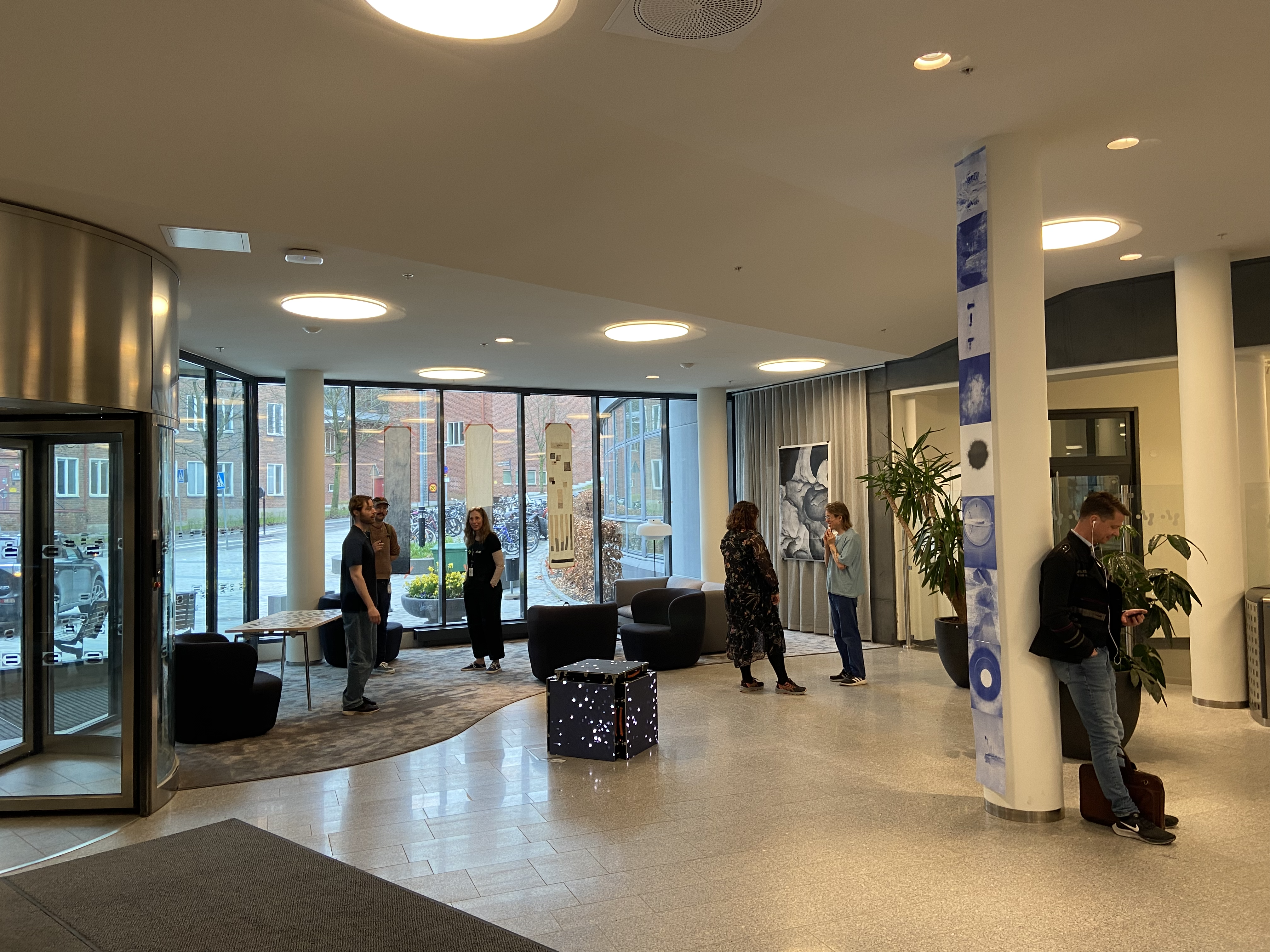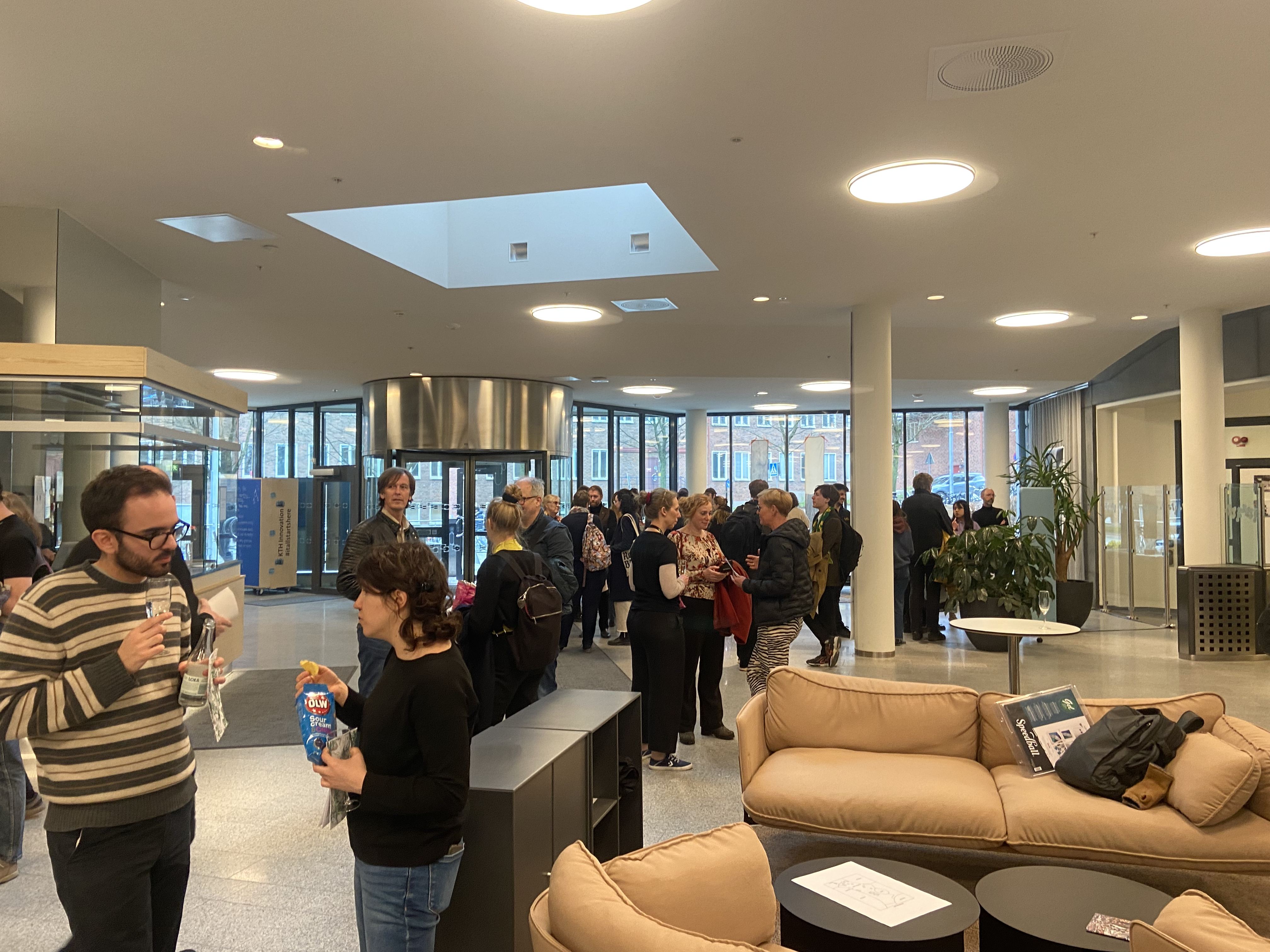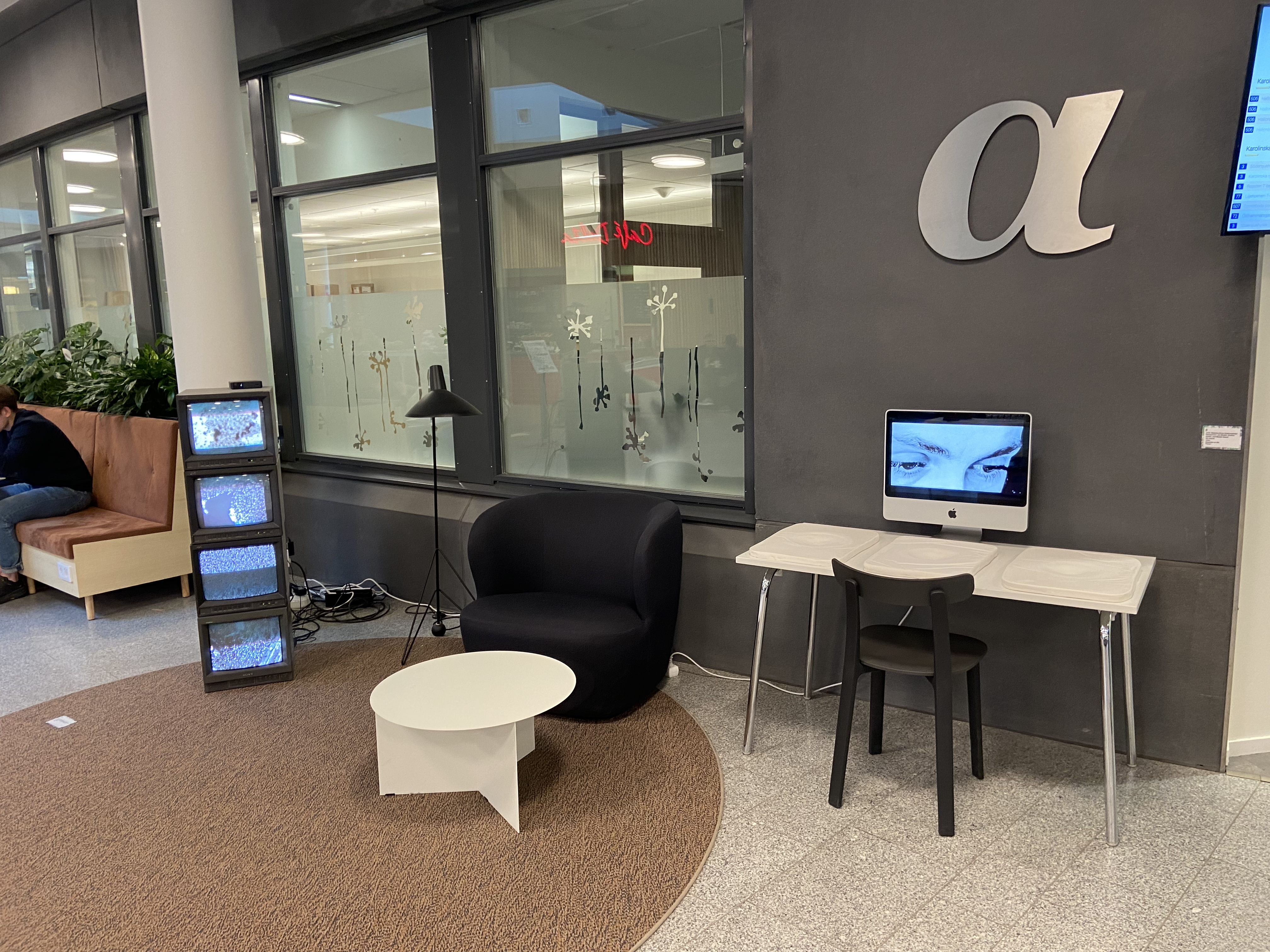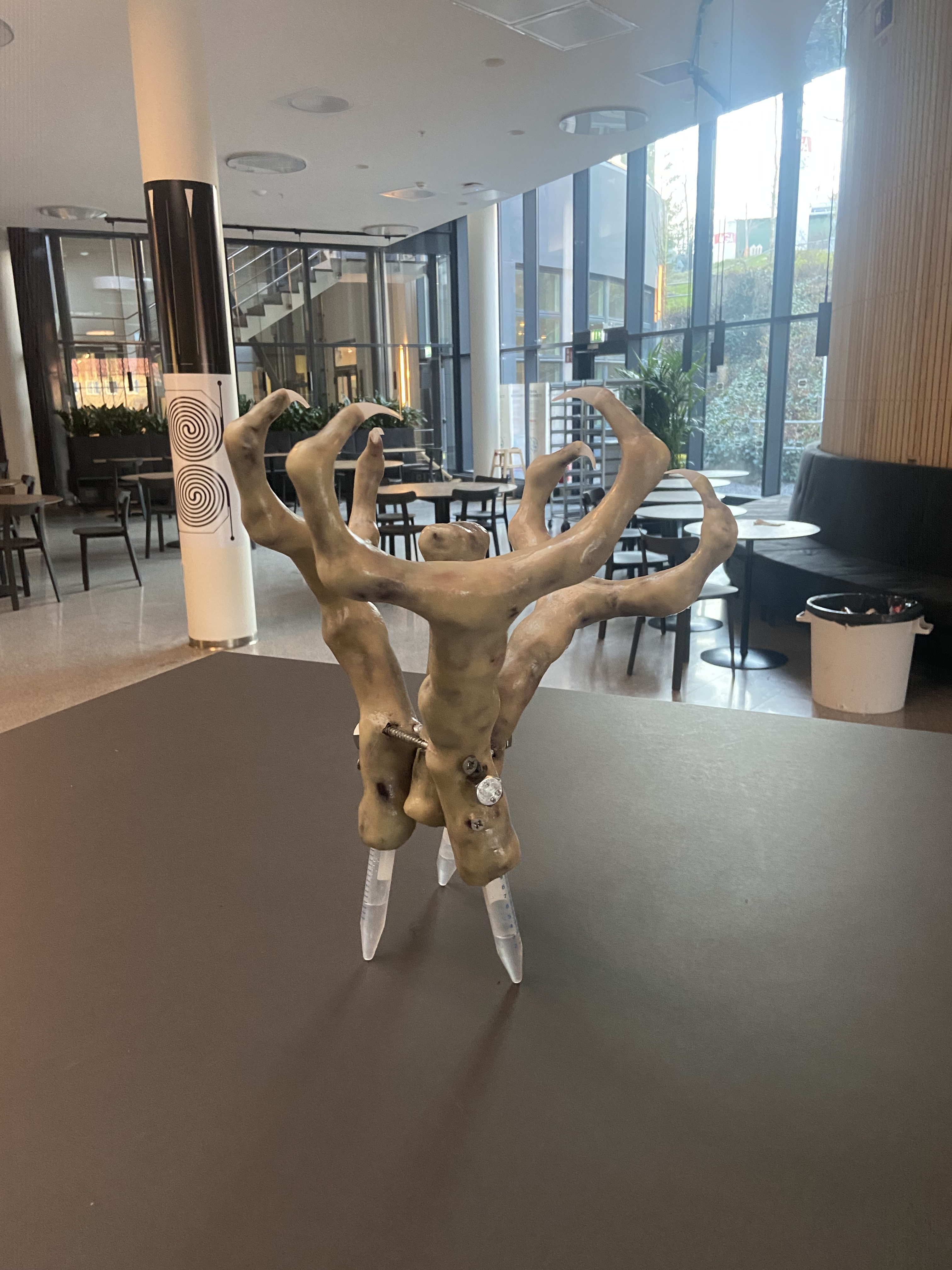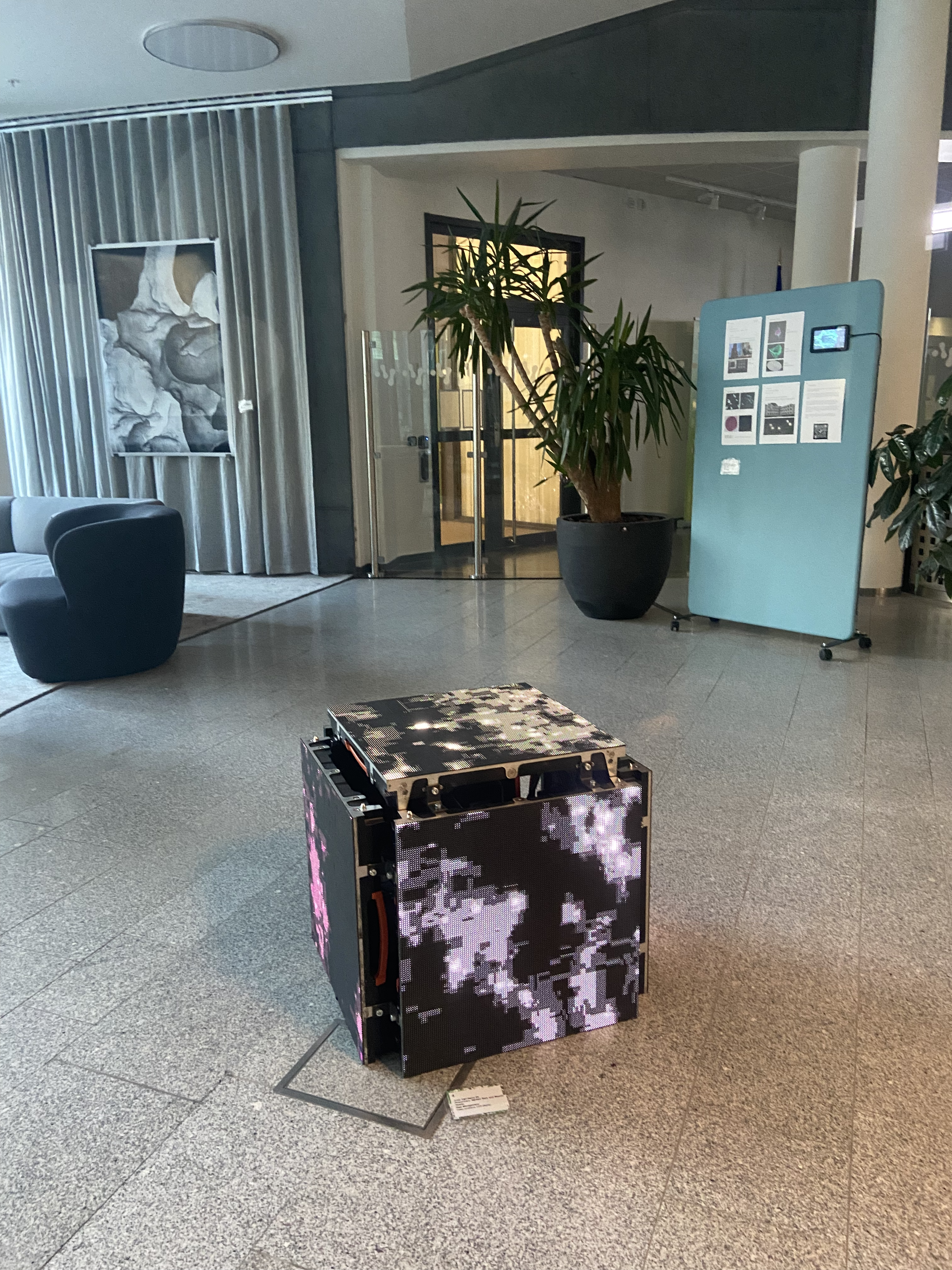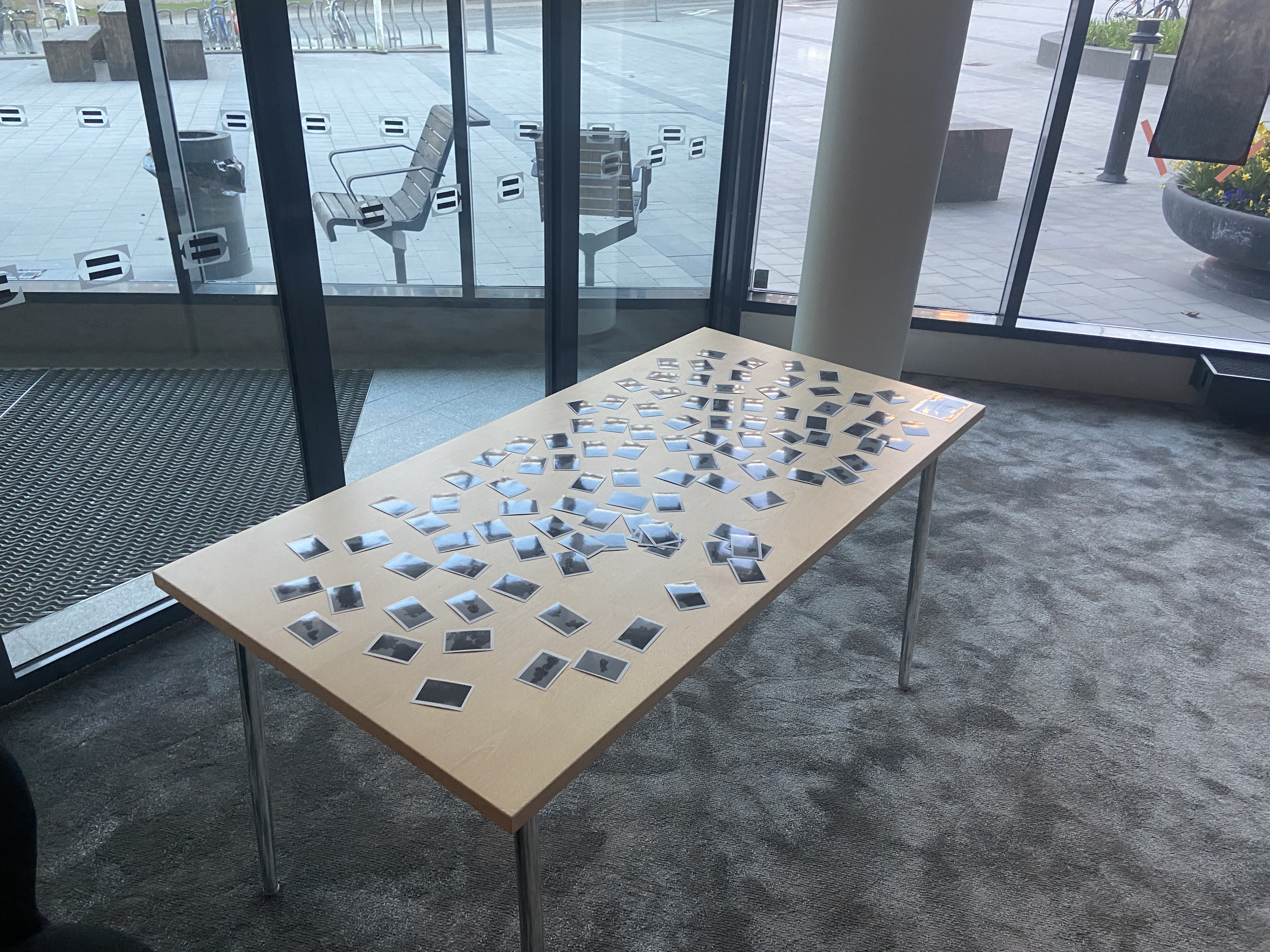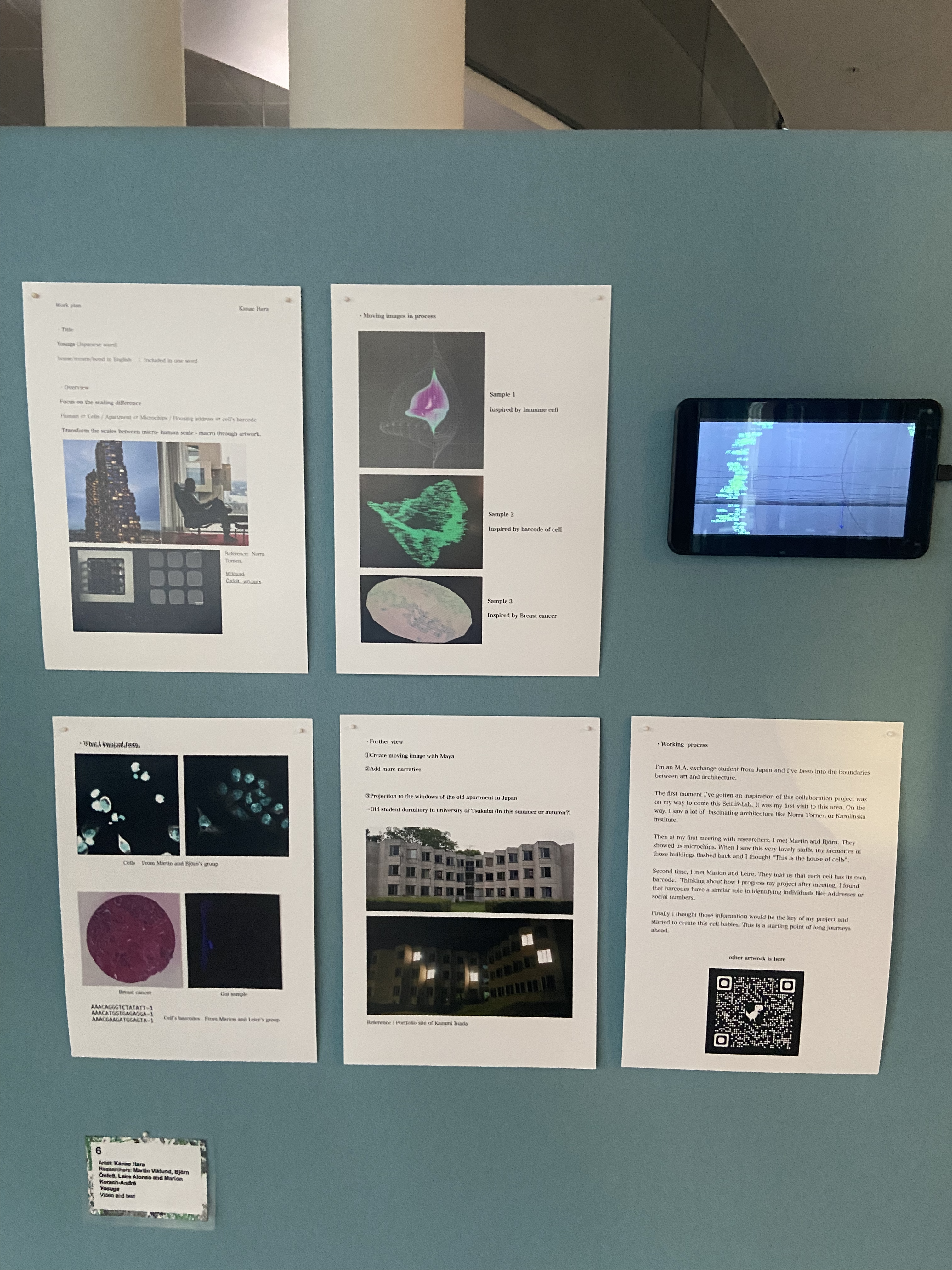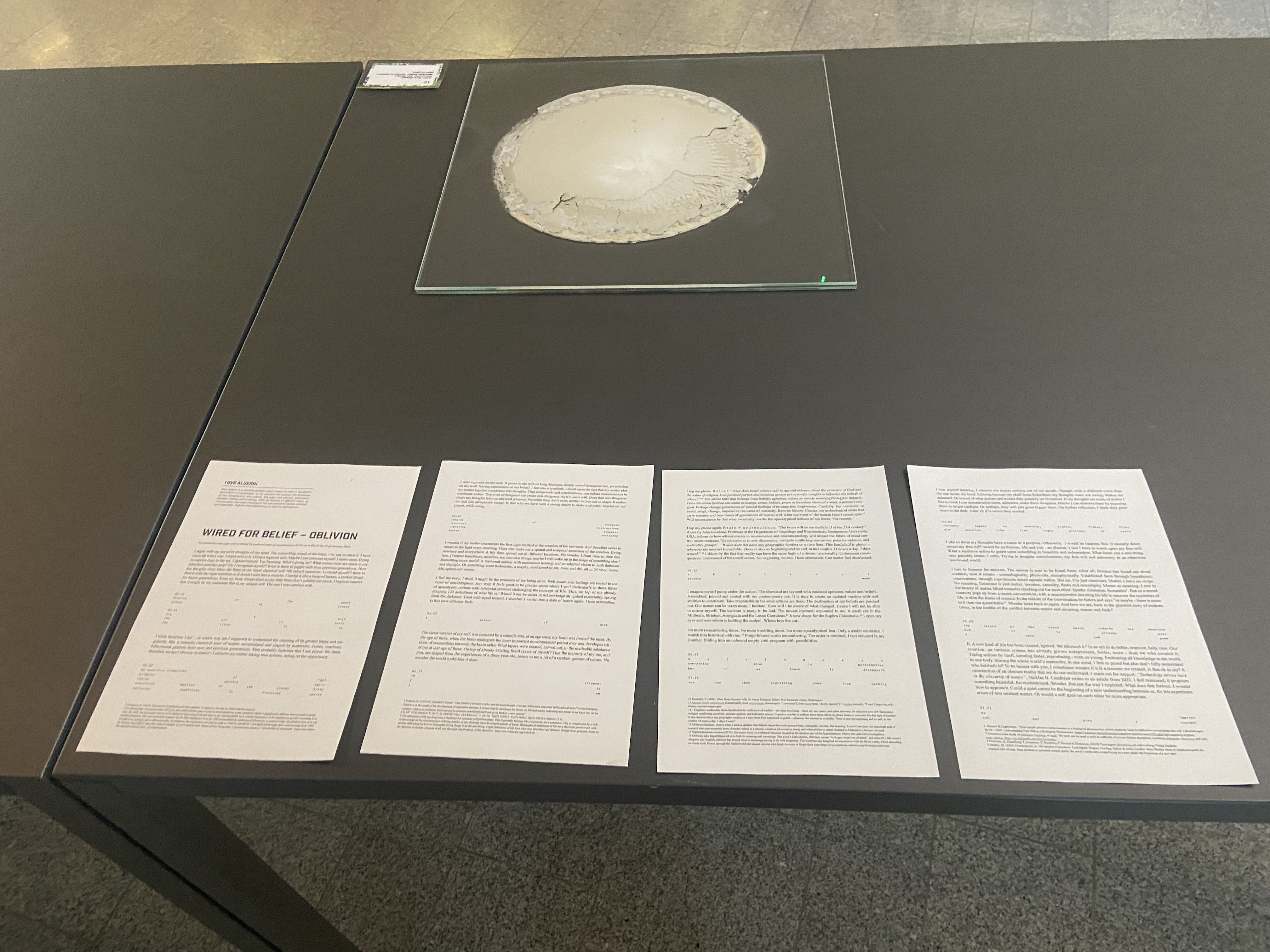Art & science in Stockholm
Exhibition Booklet, designed by Sophia Marret, contains writing from each artist about their artwork.
Scientific research through an artist’s lens: A collaboration between Stockholm’s SciLifeLab and the Royal Institute of Art
In Sweden, I have initiated a program for inspirational exchange between 16 artists at KKH and 32 researchers at SciLifeLab. Half of the artists are post-master’s students who are already practicing artists, and half are program students at KKH. The program connects the art and science communities in Stockholm with the aim of creating an opportunity for creative collaboration.
News article on SciLifeLab webiste

In the program, researchers and artists participate in three events. The first event occurred on February 6th, 2023, and was meant to introduce the scientists and artists, with quick pitch-presentations by everyone on their work and interests. The second event is a tour of the researchers’ workspaces, guided by each researcher and given to a small group of artists. These tours are currently ongoing. If there is mutual interest between a scientist and artist after the lab tours, a collaborative project can be set up on their own terms. The resulting work will be featured in an exhibition at SciLifeLab at the end of April, which is the last event.
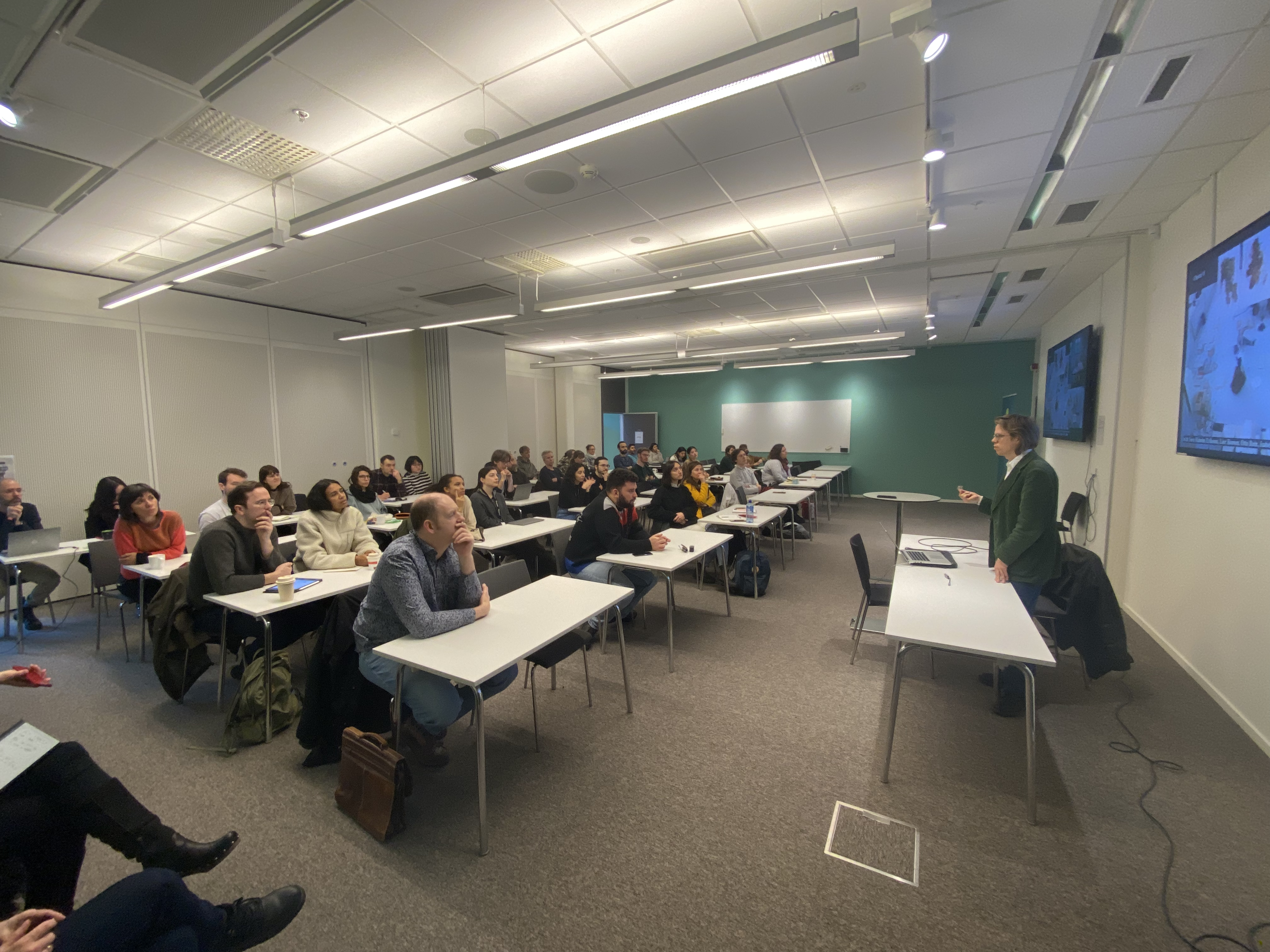
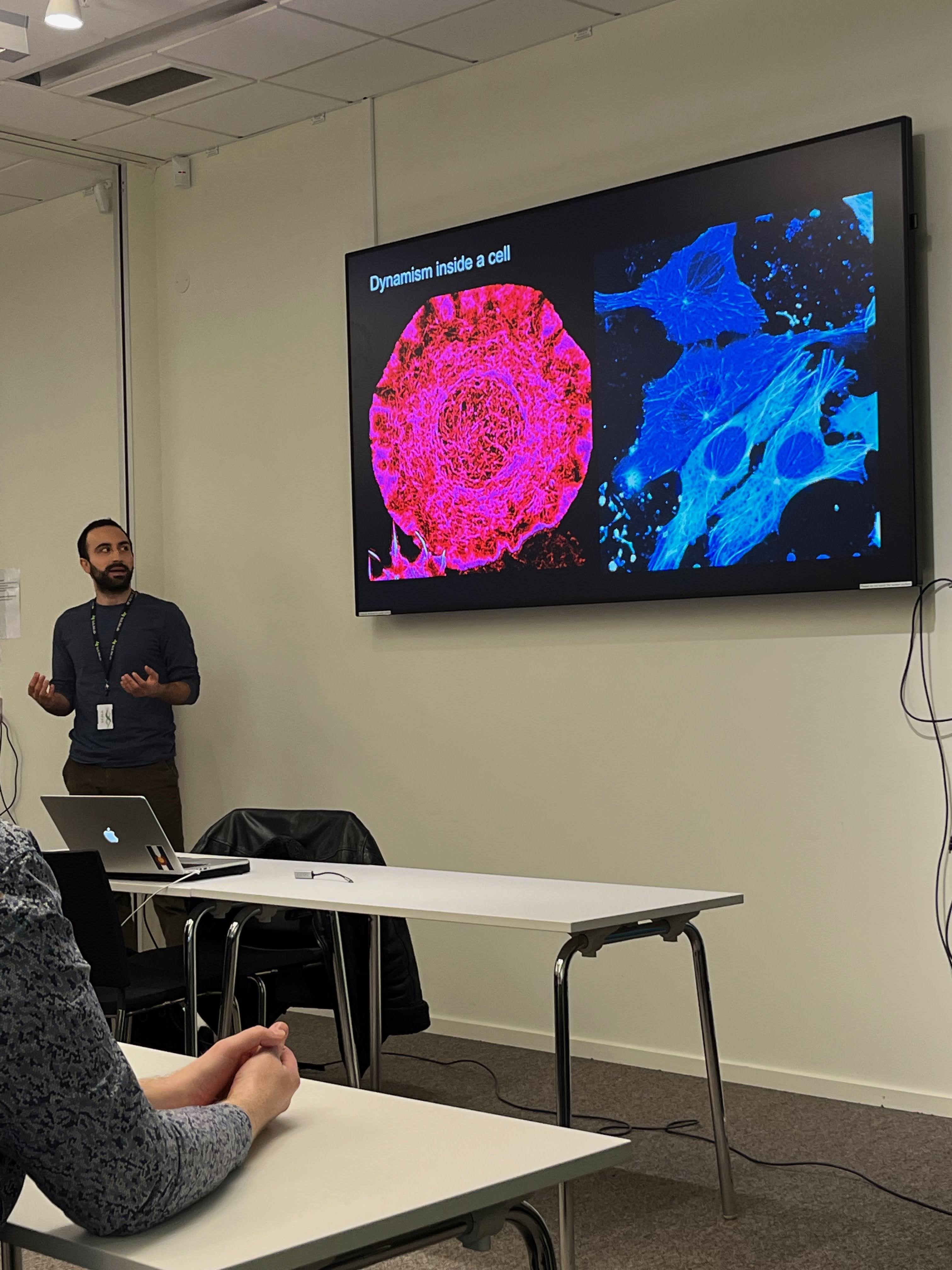
This program is a unique opportunity for outreach at the SciLifeLab. It creates a dialog with artists, lets scientists see how their work and ideas can be visualized, and may lead to increased visibility of their research. For the artists, this program will allow collaboration with leading scientists, giving them the chance to gain inspiring insight at the forefront of research in the life sciences. This program is intended as a pilot, with the goal of being continued in the future, beyond this academic semester, creating compelling and bonding connections between the artistic and scientific communities in Stockholm.
Thank you to the Lois Roth Foundation for awarding me the Roth-Thompson award to support this project.
Development of the program
In my Fulbright application, as my community engagement project, I proposed a collaboration with artists from the Royal Institute of Art (KKH) related to my research in Dr. Ilaria Testa’s lab. The goal was to engage with local artists in Stockholm. After meeting with KKH Professor Johanna Gustafsson Fürst in September and discussing my ideas with the external relations office at SciLifeLab, my community engagement project began to evolve.
Professor Fürst put me in contact with four other professors at KKH: Åsa Andersson Broms, Björn Larsson, Martin Christensen, and Rut Karin Zettergren. I met with them at KKH in October, where they gave me a tour of the art studios and we discussed the project. With the permission of Dr. Testa, Professors Broms, Zettergren, and Larsson toured my lab in November.
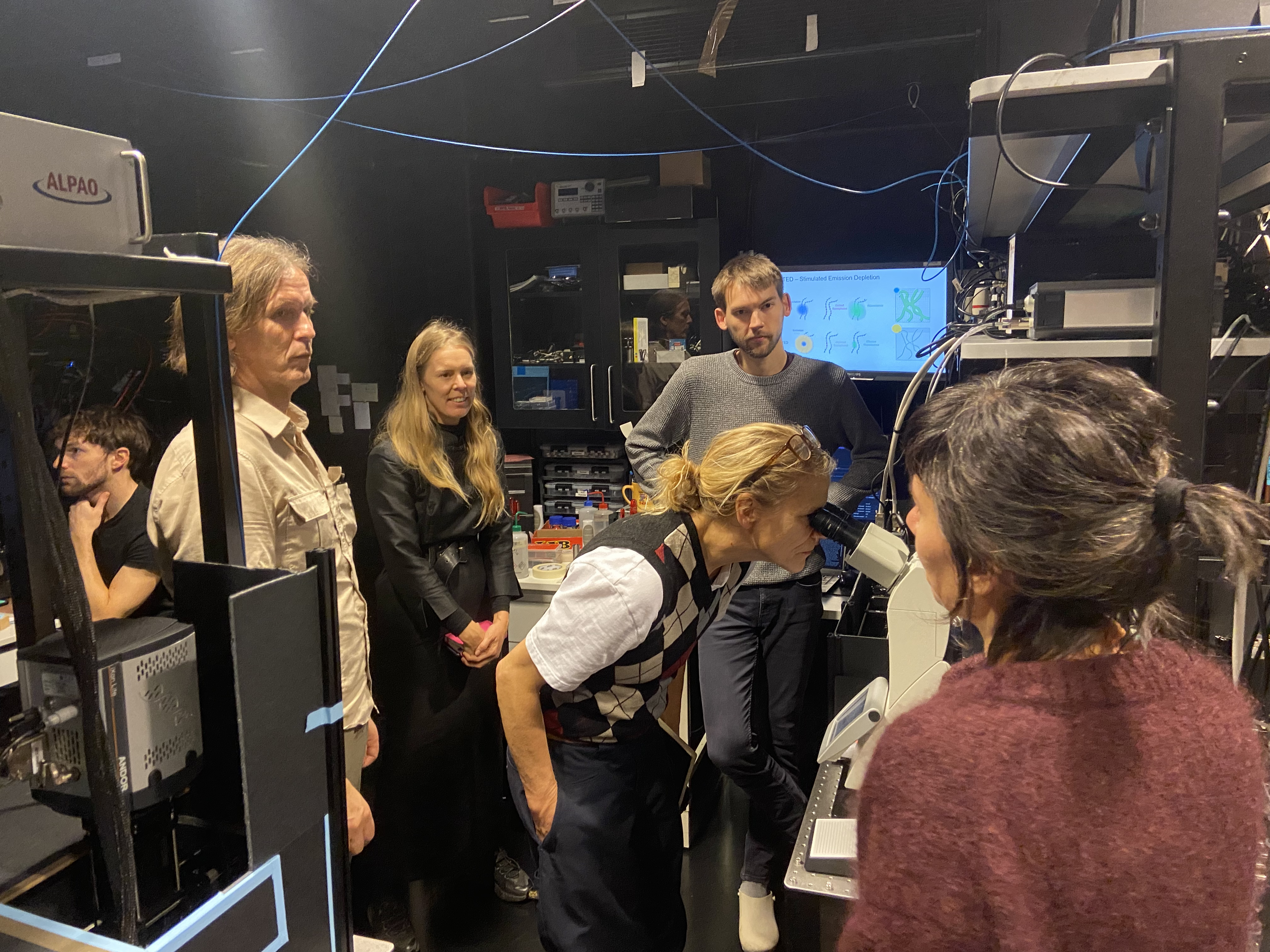
Early in December, I reached out to the SciLifeLab external relations team again and proposed a program connecting researchers at SciLifeLab and artists at the KKH. Inspired in part by the exhibition The Life of a Neuron at ARTECHOUSE in New York City, seen a week before I departed for Stockholm, as well as the exhibition Eternal Life at Liljevalchs, which I saw in October, I wanted to create a collaboration between artists and scientists on a scale larger than just my personal research. With approximately 700 researchers working at the Solna campus of SciLifeLab, it seemed like the perfect place for such a project to occur. The external relations office at SciLifeLab was enthusiastic about supporting the program and has helped me a great deal in organizing it.
On December 14th, I gave a presentation on the program to a post-master’s course at the KKH, taught by Professors Broms and Larsson. The art professors wrote up a program description for KKH students and aimed to select 10 artists, half post-masters and half program students, through their own application process.
On my end, I recruited scientists with the help of the external relations office. With 10 artists, we were hoping to find 10 researchers. To generate interest and explain the program, on December 15th, I announced the program to researchers at SciLifeLab’s WinterFest. I also announced the program through email to all SciLifeLab employees and collected applications through a form created by the external relations office.
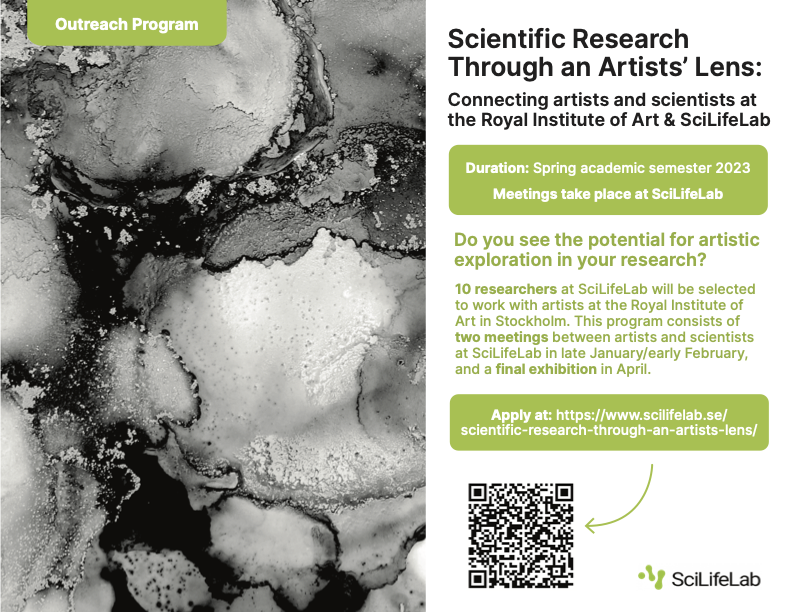
We ended up getting 32 researchers applicants to the program, much more than we expected. Instead of selecting 10 researchers from the applicants, we decided to restructure the program to accommodate for everyone. Due to the large number of researchers, the art professors decided to accept all 15 of the artist applicants as well.
I assigned each artist to two labs based off of a ranked selection made by the artist and scheduled lab tours in the weeks following the first meeting.
From April 25th - May 5th, we had an exhibition of artists’ work in the lobby of SciLifeLab.
